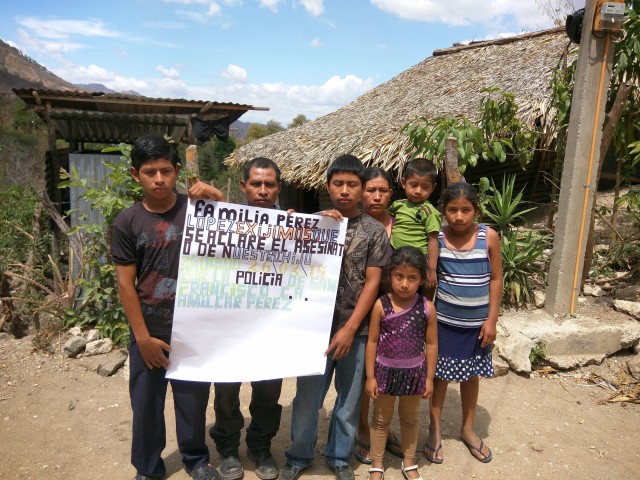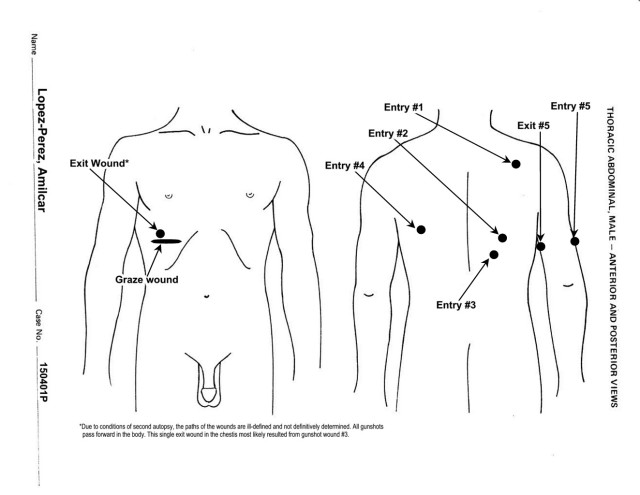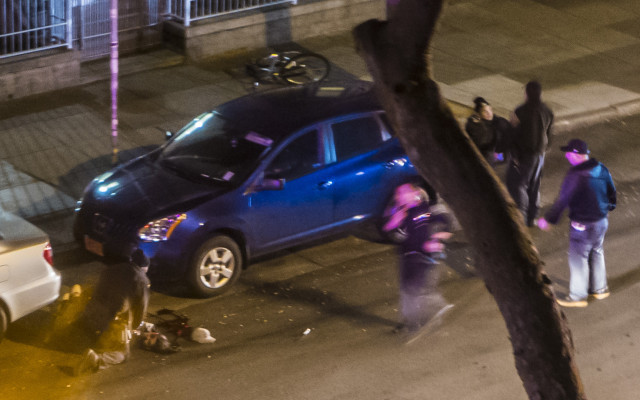Some strong evidence suggests the SFPD isn’t telling the truth — but the chief continues to defend the two officers who shot the 20-year-old immigrant in the back

By Tim Redmond
JUNE 3, 2015 – On February 26, 2015, a 20-year-old man named Amilcar Perez Lopez was shot and killed by two San Francisco police officers. The Police Department quickly said the shooting was justified, that Perez Lopez had lunged at the officers with a knife after attempting to steal a bicycle.
That’s still what the department says.
But there’s mounting evidence that the SFPD scenario is not only unlikely; it’s impossible. An autopsy conducted by a private medical examiner, which I have read, shows that the young man was shot repeatedly – in the back.
I have been covering police shootings for more than two decades, and I have yet to find an instance where any legitimate law-enforcement agency or expert has said it’s justified to shoot a fleeing suspect in the back.
And it’s hard to think of a credible scenario in which a suspect who was lunging forward at two officers with a knife could wind up with five bullet wounds in the back and one in the side of his arm.
So something is wrong with the official story. But while the case attracted a flurry of media reports at the time, and got some basic one-day stories when the family filed a federal lawsuit, the attention has mostly died down.
Still, there’s good reason to be concerned about the Perez Lopez case. And interestingly, the best story on it so far comes not from any local paper, but from the UK Guardian, which yesterday ran an in-depth report challenging much of the official line on the case.
(By some accounts, the British paper is doing a better job of covering US police shootings than the American press. The UK Guardian has certainly done a better job than any SF daily on this story.)
Let’s look at the contrasting accounts, and see which might actually make sense.
According to Police Chief Greg Suhr, who has stood by his initial accounts, Perez Lopez was attempting to steal a bicycle from another man around 9:45pm. He was armed with a knife. Somebody called 911, and two police officers, on duty but not in uniform, responded.
The two, later identified in the lawsuit as Craig Tiffe and Eric Riboli, reported that they ordered Perez Lopez to drop the knife, and he charged them.
“The officers, as they are only allowed to fire in defense of themselves or others, felt that one of those situations was in play,” Suhr said.
Eyewitness accounts contradict that, and there is some evidence that Lopez Perez, who spoke little English, might not have understood what the officers were saying and might not have known them as cops. By one account, they accosted him and one officer held him in a bear hug before he broke free and started running away.
The issue of the possibly bicycle theft isn’t really relevant. You can’t shoot someone legally for the crime of bicycle theft. The standard, held by almost all legit police departments in the country, is pretty much what Suhr articulated – police officers can use deadly force only when they reasonably believe there is a physical danger to themselves or others.
According to the lawsuit, filed April 21:
Amilcar Perez Lopez was walking to his apartment when he was confronted by a man, who began following and taunting him. An altercation ensued between the man and Amilcar. The altercation subsided and Amilcar began walking northbound on the east sidewalk of Folsom St. As he walked home, officer Tiffe and Officer Riboli surreptitiously rushed at Amilcar from behind. One of the officers … secured a bear hug around Amilcar’s petite upper body. … Amilcar was not able to determine that the men were police officers. Amilcar broke free by wriggling out from the officers hold. Amilcar fled toward the street between two vehicles.
As he fled from them, Officers Tiffe and Riboli pointed their firearms … one of the officers fired fired five bullets into Amilcar’s back and the other fired one bullet into the back of Amilcar’s head.
The autopsy clearly backs up the idea that Lopez Perez was shot from behind, possibly while fleeing, and wasn’t in the process of attacking the two officers.
The autopsy was done by Dr. A. J. Chapman, a forensic pathologist in Santa Rosa. He was working with a body that had already been cut open and examined by the San Francisco Medical Examiner’s Office – but the SF coroner is so far behind on cases that it takes several months or more before official autopsy reports are released.
So this is all the data we have.
Chapman’s report, which the lawyers representing the family shared with me, reflects mostly the dry, clinical language of a professional pathologist. He freely acknowledges that the results should be seen as provisional, since the body he was working on had already been dissected.
But there’s not much confusion among experts between an entrance wound and an exit wound in these kinds of shootings, and his conclusion that all of the shots came from behind is pretty clear.
He notes under the cause of death:
Gunshot wounds to back: three penetrating, one perforating. b. Gunshot wound perforating, right arm. c. Gunshot wound, perforating, to head.
The diagram accompanying the autopsy is also pretty clear. The shots came from behind.

In photos taken right after the shooting by a neighbor, you can see the body of Perez Lopez on the ground between two cars. You can also see what appears to be a knife with a white handle a few feet away in the street.

That might suggest a lot of things – he had tossed the knife, he was still carrying it when he was shot and it fell forward – but it doesn’t suggest that he was wielding it and approaching the officers.
Why else would he have been shot in the back? Sometimes, the police say that a suspect was shot once in the front, and then somehow, because of the force of the bullet or some other factor, was spun around before the officers could stop shooting, thus explaining shots in the back.
(Or it’s conceivable the two officers could have surrounded the suspect, who rushed at one of them, and the other fired, hoping to hit the suspect and not miss and kill his partner. Nobody is suggesting that scenario.)
In this case, the autopsy shows no shots to the front of the body. There’s one in the arm that could have come from the side, although the autopsy noted that “all gunshots pass forward in the body.”
I’m just going to take a guess here, but I suspect the city, once all the evidence is in, will settle the lawsuit. The damages will provide some sort of justice to the family, and will help replace the lost income. Lopez Perez was working in the US to send money back to his mother in Guatemala, and his support helped her get electricity and running water.
But that leaves the question of the two officers hanging. It’s interesting that Suhr immediately exonerated them, before any full investigation was complete. Police public affairs won’t comment any further on this case.
At some point, the city’s official autopsy will be released, and if it confirms what the private findings are, the chief will have a hard time justifying his original statement.
That’s something the department, the Police Commission, the news media and the community should continue to watch.




